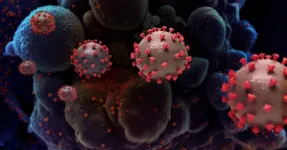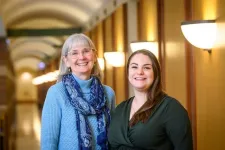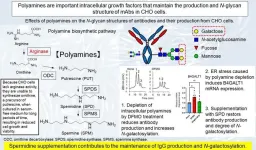New method for addressing the reliability challenges of neural networks in inverse imaging problems
Researchers develop cycle-consistency-based uncertainty quantification technique
2024-01-16
(Press-News.org)
Uncertainty estimation is critical to improving the reliability of deep neural networks. A research team led by Aydogan Ozcan at the University of California, Los Angeles, has introduced an uncertainty quantification method that uses cycle consistency to enhance the reliability of deep neural networks in solving inverse imaging problems.
This research was published Dec. 21 in Intelligent Computing, a Science Partner Journal.
Deep neural networks have been used to solve inverse imaging problems, such as image denoising, super-resolution imaging and medical image reconstruction, in which the goal is to create an ideal image using the raw image data actually captured, often after some degradation. However, deep neural networks sometimes produce unreliable results, and in some contexts, incorrect predictions can have severe consequences. Models that can quantitatively estimate how certain they are about their output can perform better at detecting abnormal situations, such as anomalous data and outright attacks.
The new method for estimating network uncertainty uses a physical forward model, which serves as a computational representation of the underlying processes governing the input–output relationship. By combining this model with a neural network and executing forward–backward cycles between the input and output data, uncertainty accumulates and can be effectively estimated.
The theoretical underpinning of the method involves establishing the bounds of cycle consistency, defined as the difference between adjacent outputs in the cycle. The researchers derived upper and lower bounds for cycle consistency, demonstrating its relationship with the uncertainty of the output of the neural network. The study considered cases where cycle outputs diverged and cases where they converged, providing expressions for both scenarios. The derived bounds can be used to estimate uncertainty even without knowledge of the ground truth.
The efficacy of the new method was demonstrated through two experiments:
1. Detection of image corruption
For this task, the researchers focused on one type of inverse problem called image deblurring. They created some noise-corrupted and uncorrupted blurry images and applied an image-deblurring network that was pre-trained on uncorrupted data to deblur those images. Then, they trained a machine learning model to classify the images as corrupted or uncorrupted through forward-backward cycles. They found that using their cycle consistency metrics for estimating network uncertainty and bias made the final classification more accurate.
2. Detection of out-of-distribution images
For this second task, the authors extended their method to image super-resolution problems. They collected three types of low-resolution images: anime, microscopy, and face images, and trained three super-resolution neural networks, one for each image type. Then, each of these super-resolution networks was tested on three types of images, where a machine learning algorithm learned to distinguish training-testing data distribution discrepancies based on the forward-backward cycles. For example, when tested with the anime-image super-resolution network, low-resolution microscopy and facial images were "out-of-distribution," that is, not what the network was trained for; the algorithm accurately detected these out-of-distribution cases to alert the users. Results for the other two networks were similar. When compared with other methods, the cycle-consistency-based method had better overall accuracy for identifying out-of-distribution images.
The researchers anticipate that their cycle-consistency-based uncertainty quantification method will significantly contribute to enhancing the reliability of neural network inferences in inverse imaging problems. Additionally, the method could find applications in uncertainty-guided learning. This study marks a significant step toward addressing the challenges associated with uncertainty in neural network predictions, paving the way for more reliable and confident deployment of deep learning models in critical real-world applications.
END
[Attachments] See images for this press release:
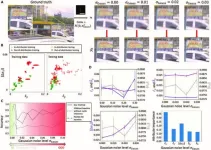
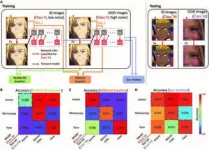
ELSE PRESS RELEASES FROM THIS DATE:
2024-01-16
The Aston Institute for Membrane Excellence (AIME) will be set up with a £10m grant from Research England
AIME will be led by Professor Roslyn Bill from Biosciences and Professor Paul Topham from Chemical Engineering and Applied Chemistry
The globally unique institute will use biomimetic polymer membranes for applications such as water purification and drug development
Aston University will establish the Aston Institute for Membrane Excellence (AIME), a globally unique, cross-disciplinary institute to develop novel biomimetic membranes, after receiving a major grant of £10m from Research England.
AIME will be led by Professor Roslyn Bill, from the School ...
2024-01-16
In early 2020, severe acute respiratory syndrome coronavirus 2 (SARS-CoV-2), a highly contagious and pathogenic virus, made its alarming debut and quickly spread worldwide, causing the novel coronavirus (COVID-19) pandemic that threatened human health and public safety. While the world was brought to a standstill, hospitals and health care systems entered unchartered territory and quickly adapted to the evolving health crisis to care for their community and keep potentially sick patients and health care workers from spreading the virus.
The magnitude of response involved the reinforced universal masking of health care ...
2024-01-16
Cambridge, Mass., Jan. 16, 2024 - A team of researchers from the ADA Forsyth Institute and University of North Carolina (UNC), Chapel Hill used single-cell transcriptomic analysis to successfully map dental pulp stem cells (DPSC) and periodontal ligament stem cells (PDLSC) and found remarkable differences between them. The study, which appeared in the Journal of Dental Research, provides the most detailed analysis of these stem cells to date, identifying the entire genome of the stem cells and their potential differentiation trajectories.
“Dental pulp and periodontal ligament stem cells both have the potential to develop into any type of cell in the body,” ...
2024-01-16
Neuroscientists from the University of Vienna and the Karolinska Institute in Stockholm have investigated whether playing violent video games leads to a reduction in human empathy. To do this, they had adult test subjects play a violent video game repeatedly over the course of an experiment lasting several weeks. Before and after, their empathic responses to the pain of another person were measured. It was found that the violent video game had no discernible effect on empathy and underlying brain activity. These results have now been published in the renowned journal eLife.
Video games have become an integral part of the everyday life of many ...
2024-01-16
WASHINGTON (Jan. 16, 2024) – Artificial intelligence (AI) has the potential to detect rheumatic heart disease (RHD) with the same accuracy as a cardiologist, according to new research demonstrating how sophisticated deep learning technology can be applied to this disease of inequity. The work could prevent hundreds of thousands of unnecessary deaths around the world annually.
Developed at Children’s National Hospital and detailed in the latest edition of the Journal of the American Heart Association, the new AI system combines the power of novel ultrasound probes with portable electronic ...
2024-01-16
Knowing a patient’s weight is necessary for many weight-based medications such as thrombolytics, anticoagulants and numerous cardiovascular medications. Scaling drugs to a patient’s weight prevents adverse events from overtreatment and treatment failure due to underdosing. Inaccurate weight estimations may lead to inaccurate drug doses, which could cause patient harm.
However, in the emergency department (ED) during resuscitative care, measuring weight is often impossible. Moreover, little is known about the relative accuracy of different methods currently used to weigh patients during emergency care. For example, ...
2024-01-16
TORONTO (16 January 2024) – As part of its pioneering approach to drug discovery, the Canadian nonprofit Conscience announced today that its first open science competition has resulted in the identification of seven promising molecules, or “hits,” that show potential for new, more effective drugs for familial Parkinson’s disease.
This first competition in Conscience’s CACHE (Critical Assessment of Computational Hit-Finding Experiments) Challenge series was funded by The ...
2024-01-16
From inside an operating room in Barquisimeto, Venezuela, electrophysiologist Maria Milagros Arends, M.D., threads wires from a pacemaker through the veins and into the heart muscle of a patient.
This pacemaker, which regulates the heartbeat and can be lifesaving, was once in the body of another person. It has been recycled, or “reconditioned”— donated, tested, sterilized and shipped from the United States to the South American country for implantation.
“We have a waiting list of around 300 people who could potentially lose their lives in less than a month,” ...
2024-01-16
CHAMPAIGN, Ill. — A new study links increased use of acetaminophen during pregnancy – particularly in the second trimester – to modest but noticeable increases in problems with attention and behavior in 2-, 3- and 4-year-olds. The study adds to a growing body of evidence linking the frequent use of acetaminophen in pregnancy to developmental problems in offspring.
The findings are detailed in the journal Neurotoxicology and Teratology.
The research is part of the Illinois Kids Development Study at the University of Illinois Urbana-Champaign, which explores how environmental ...
2024-01-16
Monoclonal antibodies (mAbs) are laboratory-designed proteins that mimic the immune system's antibodies. To date, many therapeutic mAbs belonging to the immunoglobulin G (IgG) class of antibodies, have been approved for the treatment of cancer and autoimmune diseases. Cell lines such as the Chinese hamster ovary (CHO) cells are generally used to produce mAbs. Notably, the production and manufacture of mAbs are regulated by critical quality attributes (CQAs) to ensure their safety and efficacy in treatment.
An important CQA for mAbs is the N-linked glycosylation present at a specific position (Asn297). N-linked glycans consist of N-acetylglucosamine (GlcNAc), mannose (Man), fucose ...
LAST 30 PRESS RELEASES:
[Press-News.org] New method for addressing the reliability challenges of neural networks in inverse imaging problems
Researchers develop cycle-consistency-based uncertainty quantification technique


